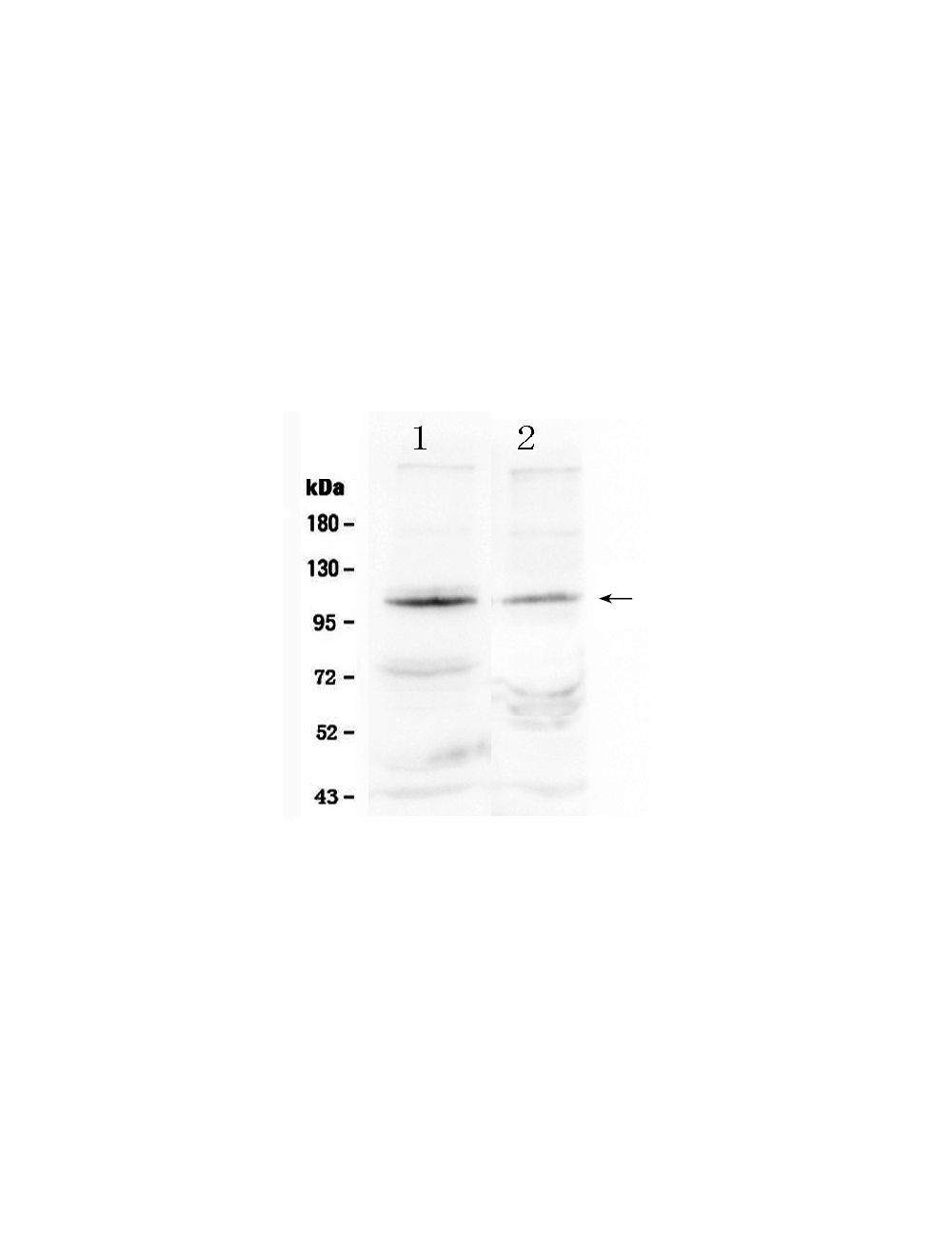Hypoxia-inducible factor-2 alpha (HIF-2-alpha), Rabbit Polyclonal Antibody
As low as
US$427.00
Only %1 left
Catalog Number
R-1786
- Product Name Hypoxia-inducible factor-2 alpha (HIF-2-alpha), Rabbit Polyclonal Antibody
- Product Description Rabbit anti-Hypoxia-inducible factor-2 alpha (HIF-2-alpha) Polyclonal Antibody (Unconjugated), suitable for WB.
- Alternative Names Endothelial PAS domain-containing protein 1; EPAS-1; Hypoxia-inducible factor 2 alpha; HIF-2 alpha; HIF2 alpha; Epas1; Hif2a;
- Application(s) WB
- Antibody Host Rabbit
- Antibody Type Polyclonal
- Specificity Detects HIF2A by Western Blotting in tissue homogenates. Rat. Expected to react with mouse HIF2A due to immunogen sequence homology.
- Species Reactivity Human, Mouse (Predicted), Rat
- Immunogen Description A synthetic peptide (HALDSENMTKSHQNLCTKG) corresponding to a peptide sequence in the middle region (282-301) from human Hypoxia-inducible factor-2 alpha. This sequence is identical to rat and mouse HIF2A.
- Conjugate Unconjugated
- Purity Description Affinity purified on antigen column
- Regulatory Status For research use only.
Product Info
- Product Description Rabbit anti-Hypoxia-inducible factor-2 alpha (HIF-2-alpha) Polyclonal Antibody (Unconjugated), suitable for WB.
-
Related Products
Hypoxia-inducible factor-2 (HIF-2-alpha), Rabbit Polyclonal Antibody
- Application(s) WB
- Application Details Western Blotting (WB). A concentration of 0.1-0.5 µg/mL is recommended for WB. Biosensis recommends optimal dilutions/concentrations should be determined by the end user.
- Target Hypoxia-inducible factor-2 alpha (HIF-2-alpha)
- Specificity Detects HIF2A by Western Blotting in tissue homogenates. Rat. Expected to react with mouse HIF2A due to immunogen sequence homology.
- Target Host Species Human
- Species Reactivity Human, Mouse (Predicted), Rat
- Antibody Host Rabbit
- Antibody Type Polyclonal
- Antibody Isotype IgG
- Conjugate Unconjugated
- Immunogen Description A synthetic peptide (HALDSENMTKSHQNLCTKG) corresponding to a peptide sequence in the middle region (282-301) from human Hypoxia-inducible factor-2 alpha. This sequence is identical to rat and mouse HIF2A.
- Sequence HALDSENMTKSHQNLCTKG
- Purity Description Affinity purified on antigen column
- Format Lyophilized with 5 mg BSA, 0.9 mg NaCl, 0.2 mg Na2HPO4, 0.05 mg Thimerosal, 0.05 mg NaN3.
- Reconstitution Instructions Spin vial briefly before opening. Reconstitute in 100 µL sterile-filtered, ultrapure water to achieve an antibody concentration of 1 mg/mL. Centrifuge to remove any insoluble material.
- Storage Instructions Store lyophilized antibody at 2-8°C. After reconstitution, aliquot and store at -20°C for a higher stability. Avoid freeze-thaw cycles.
- Batch Number Please see item label.
- Expiration Date 12 months after date of receipt (unopened vial).
- Alternative Names Endothelial PAS domain-containing protein 1; EPAS-1; Hypoxia-inducible factor 2 alpha; HIF-2 alpha; HIF2 alpha; Epas1; Hif2a;
- Uniprot Number Q99814
- Uniprot Number/Name Q99814 (EPAS1_HUMAN)
- Scientific Background Transcription factor involved in the induction of oxygen regulated genes. Binds to core DNA sequence 5'-[AG]CGTG-3' within the hypoxia response element (HRE) of target gene promoters. Regulates the vascular endothelial growth factor (VEGF) expression and seems to be implicated in the development of blood vessels and the tubular system of lung. May also play a role in the formation of the endothelium that gives rise to the blood brain barrier. Potent activator of the Tie-2 tyrosine kinase expression. Activation seems to require recruitment of transcriptional coactivators such as CREBBP and probably EP300. Interaction with redox regulatory protein APEX seems to activate CTAD (Reference: uniprot.org).
- Shipping Temperature 25°C (ambient)
- UNSPSC CODE 41116161
- Regulatory Status For research use only.

 1800 605-5127
1800 605-5127 +61 (0)8 8352 7711
+61 (0)8 8352 7711

